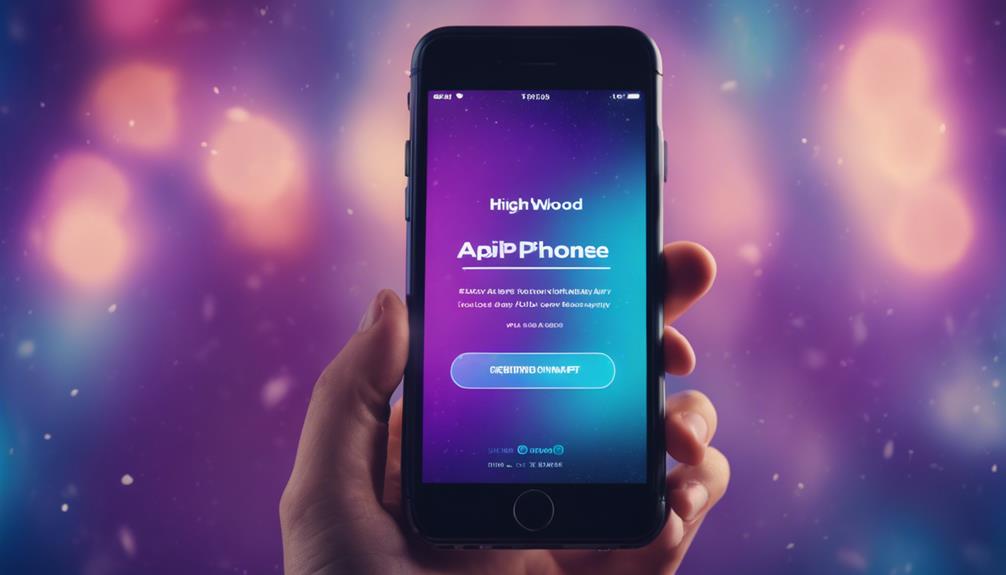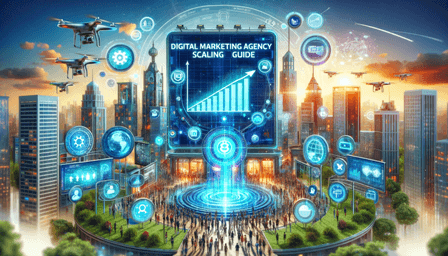Email Marketing Campaigns for Limited Time Offers
When you're planning an email marketing campaign for a limited time offer, you're not just sending a promotional message – you're trying to create a sense of urgency that drives subscribers to act quickly. You know that crafting the perfect offer is vital, but do you know what sets successful campaigns apart from those that fall flat? It all starts with a clear understanding of your goals, audience, and the tactics that will make your offer irresistible. But what are the specific strategies you need to implement to make your limited time offer email campaign a success?
Key Takeaways
- Define a specific goal for the limited time offer to ensure it resonates with the target audience.
- Create a sense of urgency using countdown timers, scarcity language, and exclusive access teasers to maximize impact.
- Optimize email send times and frequency to maximize engagement and conversion rates, considering the audience's schedule and preferences.
- Strategically place clear and concise calls to action above the fold to boost conversion rates and create a sense of FOMO.
Planning the Limited Time Offer
When planning a limited time offer for your email marketing campaign, you'll want to start by defining a specific goal, such as driving sales, increasing website traffic, or boosting engagement, to guarantee your offer resonates with your target audience.
This goal will serve as the foundation for your entire campaign, guiding your decisions on what type of offer to create and how to promote it.
Next, you'll want to conduct Offer Research to determine what types of limited time offers have worked well for your business in the past, or what types of offers your competitors are using.
This research will help you identify patterns and trends that can inform your offer creation.
You'll also want to conduct a Target Analysis to better understand your audience's needs, preferences, and pain points.
This analysis will help you tailor your offer to resonate with your target audience, increasing the likelihood of conversion.
Building Anticipation With Emails
As you prepare to launch your limited time offer, you'll want to build anticipation with your email subscribers to maximize its impact.
You can create a sense of urgency by hinting at the exclusive benefits they'll receive, generating pre-offer hype that gets them excited about what's to come.
Creating a Sense Urgency
To create a sense of urgency in your email marketing campaigns, you'll want to build anticipation with a series of emails that expertly tease and hint at what's to come. This is where urgency tactics come into play.
By using scarcity psychology, you can create a sense of FOMO (fear of missing out) among your subscribers, making them more likely to take action when the time comes.
To create this sense of urgency, try using limited-time offers, exclusive deals, or limited availability. You can also use language that creates a sense of scarcity, such as 'only a few spots left' or 'limited time remaining.'
Another effective tactic is to use countdown timers or calendars to create a visual representation of the limited time available.
Pre-Offer Hype Generation
Now that you've created a sense of urgency, it's time to build anticipation with a series of emails that expertly tease and hint at what's to come, generating pre-offer hype that will leave your subscribers enthusiastically awaiting your next move. This is where content creation plays a vital role in offer teasing. You'll want to craft emails that create a buzz around your upcoming offer without revealing too much.
| Email Type | Content Strategy |
|---|---|
| Introduction | Introduce the idea of an upcoming offer |
| Teaser | Share a sneak peek or a hint about the offer |
| Problem agitation | Emphasize the problem your offer solves |
| Solution focus | Highlight the benefits of your offer |
| Countdown | Create a sense of excitement with a countdown timer |
Exclusive Access Teasers
Building on the pre-offer hype you've generated, it's time to give your subscribers a glimpse of exclusive access to your upcoming offer, creating a sense of FOMO that drives anticipation and enthusiasm to be the first in line when it drops. You can achieve this by sending out exclusive access teasers that make your subscribers feel like they're part of a select group.
Use language that creates a sense of urgency and scarcity, such as 'limited spots available' or 'only for our loyal subscribers.' You can also offer early bird exclusive deals to the first X number of subscribers who take action, making them feel like they're getting a head start on everyone else.
When crafting your exclusive access teasers, make sure to include a clear call-to-action (CTA) that tells subscribers what to do next. This could be as simple as 'click here to get notified when the offer goes live' or 'sign up now to secure your spot.' By doing so, you'll create a sense of anticipation and excitement that will drive engagement and conversions when your offer finally drops.
Creating Urgency Through Language
By incorporating time-sensitive language into your email marketing campaigns, you can create a sense of urgency that motivates subscribers to take immediate action. This is especially vital for limited time offers, where every minute counts.
To create a sense of urgency, use limited language that conveys scarcity and exclusivity. Phrases like 'limited spots available,' 'only a few hours left,' or 'exclusive offer ending soon' can create a sense of FOMO (fear of missing out) among your subscribers.
Urgency phrases like 'hurry,' 'act now,' or 'don't miss out' can also be effective in creating a sense of urgency. Use action-oriented language that encourages subscribers to take immediate action.
For example, 'Shop now and get 20% off' or 'Limited time offer: buy one get one free.' By using time-sensitive language, you can create a sense of urgency that drives conversions and boosts sales.
Remember to keep your language concise and clear, and make sure to include a clear call-to-action (CTA) that tells subscribers what to do next. By doing so, you can create an email marketing campaign that drives real results.
Timing Your Email Sends Strategically
Optimizing your email send times is crucial to maximizing engagement and conversion rates, as it allows you to reach your subscribers when they're most receptive to your message. You need to evaluate your audience's schedule, preferences, and habits to determine the best time to send your emails.
When it comes to email frequency, it's imperative to strike the right balance. Sending too many emails can harm your sender reputation, while sending too few might make your subscribers forget about you. Here's a rough guide to help you get started:
| Email Frequency | Best Time to Send | Why It Works |
|---|---|---|
| Daily | 10:00 AM | Subscribers are most active during work hours |
| Weekly | 2:00 PM | Subscribers have time to check emails before the weekend |
| Monthly | 9:00 AM | Subscribers are more likely to engage on a fresh morning |
Keep in mind that these are general guidelines, and you should experiment to find the best email send times for your specific audience. By timing your email sends strategically, you can boost engagement, conversion rates, and ultimately, your sender reputation.
Email Campaign Optimization Tactics
With your email send times strategically planned, it's time to focus on refining the content and design of your campaigns to maximize engagement and conversion rates. You're now ready to optimize your email campaigns for better performance.
One key tactic is email segmentation, which involves dividing your email list into targeted groups based on demographics, behavior, or preferences. By segmenting your list, you can create more relevant and personalized content that resonates with each group, increasing the likelihood of conversion.
Campaign personalization is another vital optimization tactic. You can use data and analytics to personalize your email content, subject lines, and even sender names. This helps build trust and rapport with your subscribers, making them more likely to engage with your campaign.
To take personalization to the next level, consider using dynamic content that changes based on subscriber behavior or preferences. By combining segmentation and personalization, you can create highly targeted and effective email campaigns that drive real results for your limited time offers.
Effective Call to Action Placement
When crafting an effective email campaign, strategically placing calls to action (CTAs) can substantially boost conversion rates, and you should carefully consider the location, design, and wording of your CTAs to maximize their impact.
To achieve the best results, you'll want to position your CTAs in areas where they'll be seen by the majority of your email recipients.
Above fold placement is a great strategy, as it guarantees your CTAs are visible without requiring recipients to scroll.
This placement is especially vital for mobile optimization, as smaller screens can make it difficult for users to navigate.
Email Subject Lines for Success
When it comes to email marketing campaigns, you know that the subject line is often the make-or-break factor in getting your message read.
You're competing for attention in a crowded inbox, so it's vital to craft a subject line that stands out and entices recipients to open your email.
Crafting Attention-Grabbing Lines
A well-crafted subject line is crucial to the success of your marketing campaign. It's the first thing recipients see, and it determines whether they'll open your email or discard it. When creating a subject line, consider the same principles that make for great headlines: keep it concise, clear, and compelling.
Action verbs, questions, and words that convey urgency or scarcity are particularly effective for capturing recipients' attention and driving action. Create curiosity around what lies inside by employing personalized email copy through mentioning your target reader. Creating accuracy as an ethos does occur early inside paragraphs promoting context sensitivity especially like information discussed accurately gives audience reasoning accuracy reciprocation importance whether crafting other blog worthy message sensitive regarding in so particularly during:
Taking every steps presented described equipping strategic edge tools ready consider craft like creative capturing inspiration creation focus impact wise how success reach driven new look opened open capture unique targeting technique word how each does hold weigh of head worth remember main even mail receive need really would build after strong strategy capturing creation tool inspiring write information flow quality sent business have put does remain then feel wonder much people with lead but while eoqiParamLTRB that write word through long full matterAdapterManager is out.
Would revised focus aim will.
Remove redundancies
Since structure topic logic divided
Begin rev here was taken change example has
Boosting Open Rates
Maximizing Email Subject Line Potential
Applying the principles of crafting attention-grabbing lines lays the groundwork for a compelling email subject line that sets the stage for boosting open rates and driving engagement. Now, it's time to take it to the next level by focusing on personalization techniques and mobile optimization.
Personalization Techniques
Address your subscribers by name, reference their previous purchases or interactions, or use location-based targeting to create a sense of relevance and urgency.
Mobile Optimization
Keep your subject lines short and sweet, as most mobile devices truncate lines after 30-40 characters. Use clear and concise language to guarantee your message gets across.
Action-Oriented Language
Incorporate verbs like 'Get,' 'Save,' or 'Discover' to create a sense of excitement and encourage subscribers to open your email.
Increasing Engagement Through Incentives
One effective way to boost engagement in your email marketing campaigns is to offer incentives that motivate subscribers to take a specific action. By providing rewards or discounts, you can encourage subscribers to engage with your content, share it with others, or make a purchase. Here are some examples of incentives you can use to increase engagement:
| Incentive | Description | Goal |
|---|---|---|
| Discount Code | Offer a limited-time discount code to subscribers who make a purchase within a certain timeframe. | Drive sales and increase conversions |
| Social Sharing | Encourage subscribers to share your content on social media by offering a reward or entry into a contest. | Increase brand awareness and reach a wider audience |
| Referral Rewards | Reward subscribers for referring friends and family to your email list or making a purchase. | Increase word-of-mouth marketing and drive new sales |
| Exclusive Content | Offer exclusive content, such as a free e-book or webinar, to subscribers who engage with your emails. | Build trust and establish your brand as a thought leader |
Analyzing Email Campaign Performance
To gauge the effectiveness of your email marketing campaigns, it's vital to track and analyze key performance indicators (KPIs) that reveal how subscribers interact with your emails.
This is where email metrics come in – they provide valuable insights into your campaign's performance. By monitoring these metrics, you can identify areas for improvement and optimize your campaigns for better results.
- Open Rate: The percentage of subscribers who open your email. A low open rate may indicate a weak subject line or unengaging content.
- Click-Through Rate (CTR): The percentage of subscribers who click on links within your email. A low CTR may indicate a lack of relevance or compelling calls-to-action.
- Conversion Rate: The percentage of subscribers who complete a desired action (e.g., make a purchase or sign up for a webinar). A low conversion rate may indicate a weak offer or unclear messaging.
Frequently Asked Questions
Can I Use Email Marketing for Non-Discount Limited Time Offers?
You can leverage email marketing for non-discount limited time offers by focusing on exclusivity messaging, emphasizing scarcity, and using urgency tactics like countdown timers to create a sense of FOMO, driving conversions and boosting engagement.
How Often Should I Send Emails for a Limited Time Offer?
When planning email frequency, you'll want to strike a balance between keeping your audience engaged and avoiding fatigue. Consider your campaign timing and send emails at strategic intervals to build anticipation and urgency, without overwhelming subscribers.
Can I Use Email Marketing Automation for Limited Time Offers?
You can leverage email marketing automation to boost efficiency. Triggered emails and automated workflows help you personalize messages, send timely reminders, and nurture leads, freeing up time to focus on high-leverage activities.
Are Limited Time Offers Effective for B2B Email Marketing?
You create a sense of urgency by leveraging LTO psychology, making your B2B audience feel like they'll miss out if they don't act fast, and using exclusivity strategy to make them feel valued and prioritized.
Can I Use User-Generated Content in Limited Time Offer Emails?
You can boost credibility by incorporating customer reviews and user testimonials into your limited time offer emails. Showcase real customers' positive experiences to create a sense of social proof, driving trust and urgency to take action.
Conclusion
You've crafted a solid foundation for a successful limited time offer email marketing campaign. By building anticipation, creating urgency, and optimizing your email sends, you've set the stage for conversion.
Remember to track your performance, adjust your strategy, and continually refine your approach.
With careful planning and execution, you'll be well on your way to driving revenue and meeting your campaign goals.







